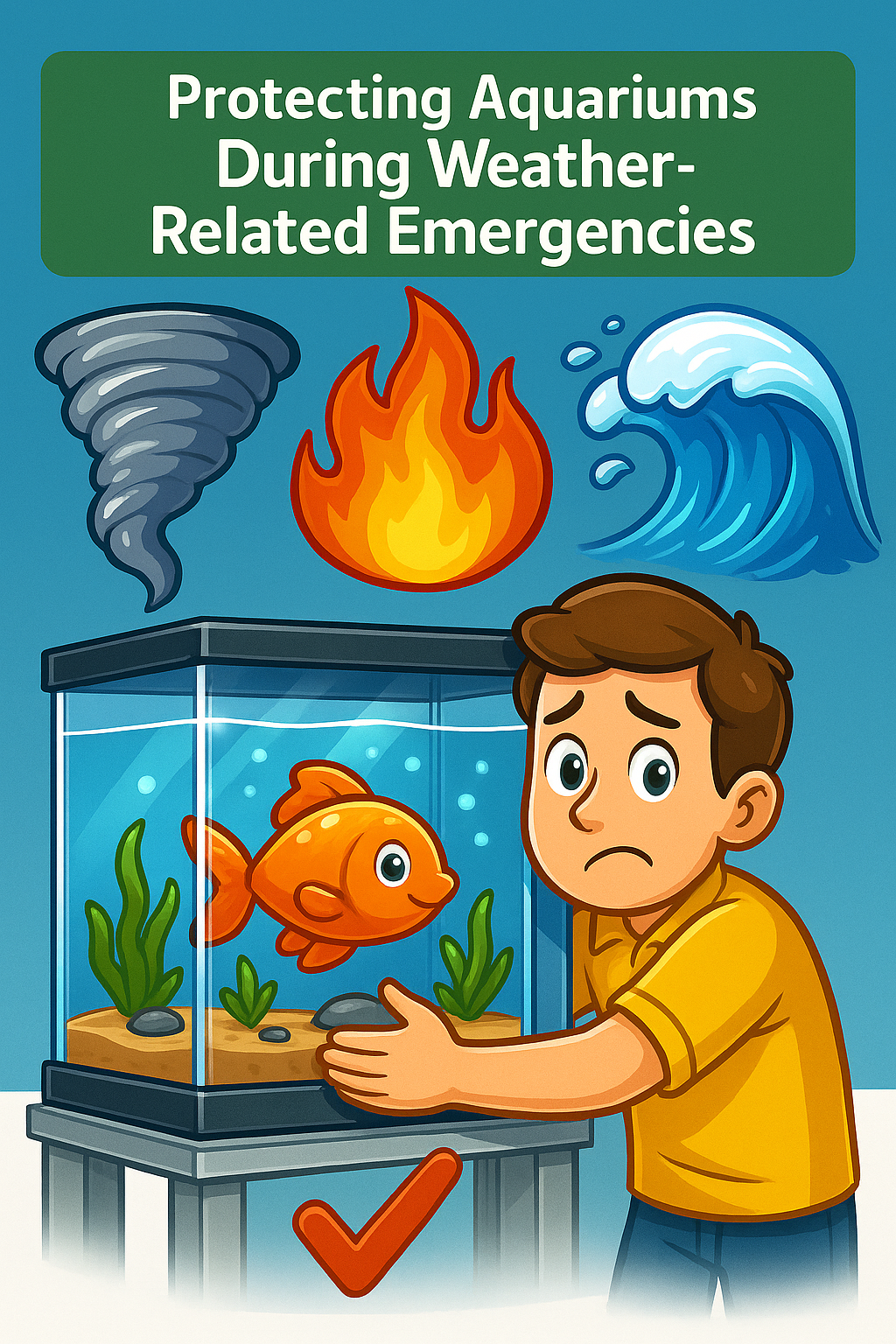Protecting Aquariums During Weather-Related Emergencies
🌪️🔥🌊🐟 Protecting Aquariums During Weather-Related Emergencies
⚠️ First Things First
💡 While we may want to save our beloved fish and other pets at all costs, our safety must always come first. In the event of a tornado, hurricane, flood, or fire—protect yourself and your family first, and seek shelter immediately. Aquariums can be replaced; lives cannot.
⚡ Step 1: Prepare for Power Outages
- 🔋 Battery-Powered Air Pumps – Keep at least 1–2 ready; oxygen is the first thing fish lose.
- 🔌 Uninterruptible Power Supply (UPS) – Can run filters/heaters for several hours.
- 🎛️ Portable Generator – Best for long-term outages (especially in hurricanes/floods).
- 🧊 Insulation – Wrap tanks with blankets, Styrofoam, or bubble wrap to maintain temperature.
🌪️ Tornado / Strong Storms
- 🏠 Tank Placement – Keep tanks away from windows (flying debris risk).
- 🪟 Cover Tanks – Secure lids to prevent fish from jumping if shaken.
- 🔌 Quick Disconnects – Use drip loops & surge protectors to avoid electrical hazards.
- 🚪 Shelter Location – If possible, relocate small/medium tanks to basements or safe rooms.
🌊 Flooding
- ⬆️ Elevate Tanks – Place on stands or cinder blocks if flood-prone.
- 🔌 Raise Electricals – Power strips and equipment should be mounted above floor level.
- 🚫 Contamination Risk – Never reuse flood-contaminated aquarium water.
- 🐟 Emergency Containers – Keep coolers or large tubs for fish relocation if tanks are compromised.
🔥 Fire
- 🚨 Life First – In fires, human and pet evacuation takes priority—fish tanks are usually impossible to move in time.
- 🧯 Fire Prevention – Use grounded outlets, avoid overloaded circuits, and apply drip loops.
- 🪣 Quick Rescue – In minor fires, fish may be moved into buckets with battery pumps.
- 🐠 Insurance – If you keep rare or expensive fish, consider coverage.
🌀 Hurricanes
- ⚡ Plan for Long Outages – Have a generator or solar/battery backup ready.
- 🪟 Shutters & Barriers – Protect tank rooms from broken glass and flooding.
- 🧊 Frozen Water Bottles – Float in tanks to help regulate temperature.
- 🐟 Pre-Storm Feeding – Feed less so waste doesn’t build up if filters stop.
📦 Aquarium Emergency Kit
Keep a tote ready with:
- 🔋 Battery-powered air pumps & spare batteries
- 🧊 Frozen water bottles
- 🪣 Buckets/coolers with lids
- 🧪 Water conditioner & ammonia detox (Seachem Prime, etc.)
- 🎛️ Portable heater (battery or generator-powered)
- 🐟 Fish nets, airline tubing, spare sponge filters
🧭 Evacuation Situations
- 🐠 Small Fish Transport – Use lidded coolers + battery pumps.
- 🦈 Large/Sensitive Fish – Often can’t be moved; maximize oxygen & stability instead.
- 🚗 Safe Transport – Line buckets with unscented trash bags so fish don’t scrape against hard plastic.
✅ Recovery After Disaster
- 🧪 Test water for ammonia, nitrite, and pH.
- 💧 Perform emergency water changes if contamination is suspected.
- 🐟 Watch for illness—stressed fish are prone to ich and bacterial infections.
- 🛠️ Replace damaged filters, heaters, or electrical gear.
🌟 Final Reminder
As aquarists, we love our fish deeply and want to protect them—just like our cats, dogs, or other pets. But when disaster strikes, human life and safety must always come first. Protect yourself, get to shelter, and when safe to return, you can focus on recovery and helping your aquariums.

Powered by Lightspeed
Display prices in:USD